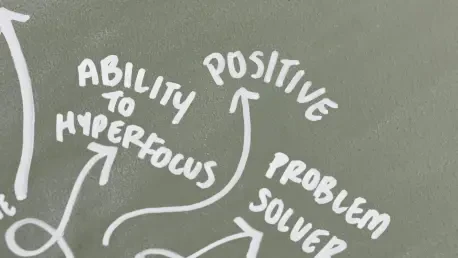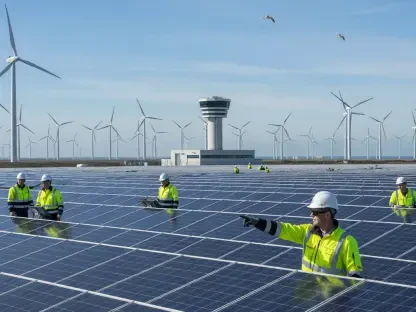In the high-stakes arena of global manufacturing, a sudden tariff hike can unravel years of meticulous planning overnight, leaving businesses scrambling to adapt. Picture a mid-sized automotive parts supplier, poised to ship millions in inventory, only to be blindsided by a 25% tariff slapped on at the last minute. Profit margins vanish, contracts teeter, and the ripple effect disrupts an entire supply chain. This scenario, far from rare, underscores a harsh reality: predicting tariffs is often no better than rolling dice. The question looms—why do these forecasts falter, and what can manufacturers do to shield themselves from such unpredictable blows?
The Tariff Trap: Are You Betting on the Unpredictable?
Navigating the world of international trade often feels like a gamble with towering stakes. Manufacturers invest heavily in tools and consultants promising to predict tariff shifts, hoping to stay ahead of policy changes. Yet, time and again, these predictions prove unreliable, leaving companies exposed to sudden cost spikes and logistical nightmares. The allure of foresight is tempting, but the reality is that banking on the unpredictable can lead to catastrophic missteps.
This reliance on shaky forecasts stems from a fundamental misunderstanding of global trade dynamics. Tariffs are influenced by a web of geopolitical maneuvers, economic pressures, and unexpected crises that no algorithm can fully anticipate. A single tweet from a world leader or an unforeseen trade dispute can render months of forecasting obsolete, pushing companies into a reactive scramble. The critical flaw lies in assuming certainty where none exists, setting the stage for exploring more robust alternatives.
The Stakes of Uncertainty in Global Trade
Tariffs are merely one piece of a much larger, chaotic puzzle that manufacturers must solve daily. Alongside cyber threats, labor shortages, and climate-driven disruptions, tariff volatility adds a layer of complexity that can destabilize even the most established supply chains. A study by the National Association of Manufacturers found that 78% of U.S. manufacturers reported significant financial impacts from trade policy shifts in recent years, with losses often running into millions due to delayed shipments and rerouted logistics.
This unpredictability translates into tangible consequences that ripple across industries. When tariffs spike without warning, companies face not just higher costs but also strained relationships with customers awaiting delayed goods. Entire production schedules can grind to a halt as raw materials become unaffordable or inaccessible, amplifying the urgency to rethink traditional approaches. The broader vulnerability of supply chains in an era of constant policy flux demands a shift from hoping for stability to preparing for upheaval.
Why Tariff Predictions Miss the Mark
The failure of tariff forecasting often boils down to the sheer unpredictability of global events. From pandemics shutting down borders to shipping crises like the Suez Canal blockage, external shocks defy even the most sophisticated models. AI-driven tools, often marketed as silver bullets, frequently overpromise and underdeliver, unable to account for the human and political variables that drive trade policy. A 2023 report by McKinsey revealed that 65% of companies using predictive analytics for tariffs still faced unexpected disruptions, costing them an average of $10 million annually.
Specific examples highlight the pitfalls of this guesswork. During the Suez Canal crisis, many firms, banking on forecasts of quick resolution, delayed alternative shipping plans only to incur massive losses from emergency freight costs. Stockpiling inventory as a hedge against predicted tariff hikes often backfires too, tying up capital in unsold goods when policies shift unexpectedly. These costly reactive decisions underscore the need to abandon the myth of reliable prediction and pivot toward strategies grounded in adaptability.
Expert Insights: Voices on the Failure of Forecasting
Industry leaders consistently echo the skepticism surrounding tariff predictions, lending weight to the argument against chasing forecasts. Dag Calafell, a technology innovation director, has bluntly called tariff prediction a “dead end,” emphasizing that no tool can keep pace with the erratic nature of global trade policies. His perspective aligns with broader industry sentiment that resources are better spent on readiness than on speculative guesses.
Research backs this view, with a 2024 study from the Institute for Supply Management showing that 72% of manufacturers who relied on predictive models still encountered major trade disruptions. Anecdotes from the field add depth to these findings—consider a steel importer who, trusting a forecast of stable tariffs, failed to secure alternative suppliers and lost $5 million when duties doubled overnight. Such real-world accounts bridge the gap between abstract data and the lived frustrations of those on the front lines, reinforcing the call for a strategic overhaul.
Building Resilience: Practical Strategies to Weather Tariff Storms
Moving beyond the critique of forecasting, a clear path emerges for manufacturers to fortify their operations against tariff volatility. Scenario planning stands out as a cornerstone tactic, enabling companies to map out responses to a range of potential disruptions, from sudden duty increases to supply chain blockages. By conducting quarterly drills and crafting detailed playbooks, businesses can prepare to switch suppliers or adjust pricing swiftly, minimizing damage when crises hit.
Another powerful tool is the adoption of digital twins—virtual replicas of supply chains that allow risk-free simulation of tariff impacts. These models help quantify the financial fallout of a policy shift, whether it’s a 15% cost increase or a two-week shipping delay, empowering leaders to test responses before committing resources. A report by Gartner estimates that companies using digital twins reduce disruption-related losses by up to 30%, proving the value of this technology in navigating uncertainty.
Finally, diversifying supplier networks offers a practical buffer against single-source risks. By cultivating relationships with multiple vendors across regions, manufacturers gain the flexibility to pivot when tariffs disrupt one channel. Implementing supplier scorecards and risk dashboards ensures that new partners meet quality and compliance standards, safeguarding against hasty, subpar choices. Together, these strategies transform unpredictability into a manageable challenge, equipping companies to withstand tariff storms with confidence.
Final Reflections and Next Steps
Looking back, the journey through the pitfalls of tariff predictions revealed a stark truth: the quest for certainty in an uncertain world often led manufacturers astray. The stories of lost millions and scrambled logistics painted a vivid picture of the consequences, while expert voices and data underscored the futility of forecasting. Each misstep, from overstocked warehouses to delayed shipments, served as a lesson in the need for a new mindset.
The path forward demands a commitment to resilience over speculation. Manufacturers who embrace scenario planning, harness digital twins, and diversify their supply chains find themselves better equipped to handle trade policy shocks. As the landscape of global trade continues to evolve, the focus shifts to sustained adaptability—investing in technology and fostering a culture of agility becomes not just a response, but a long-term strategy for thriving amid chaos.









